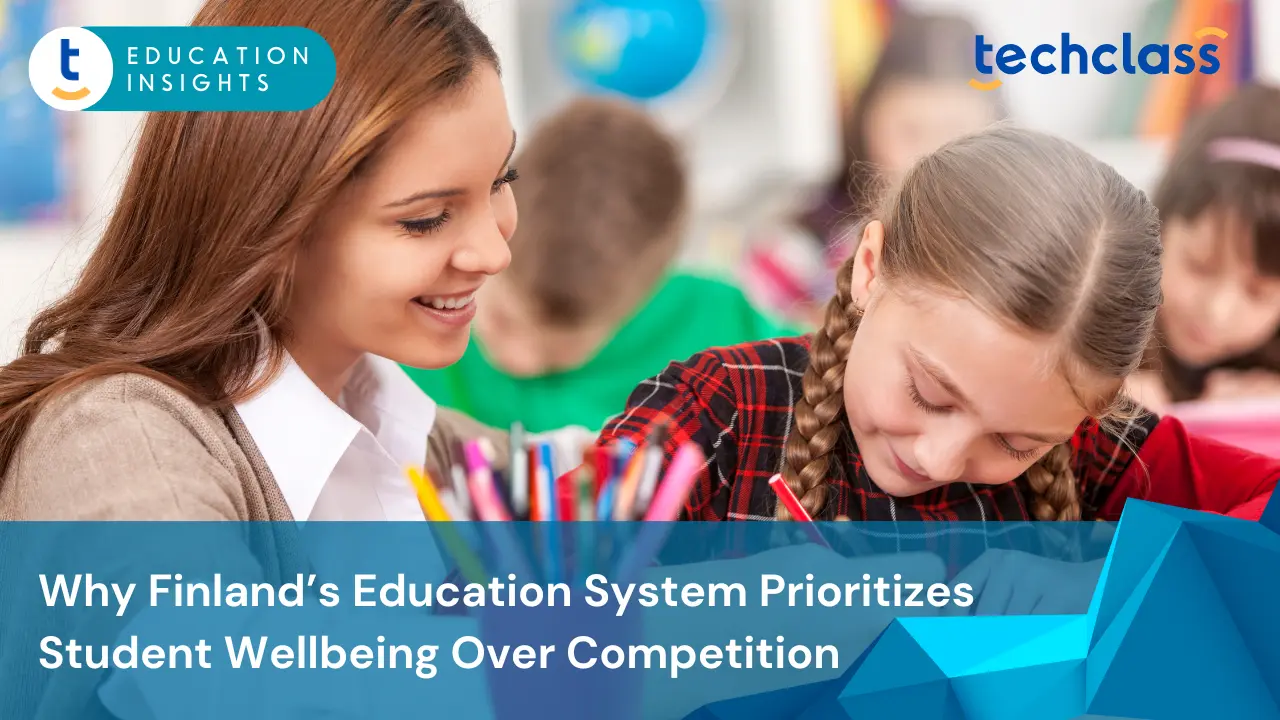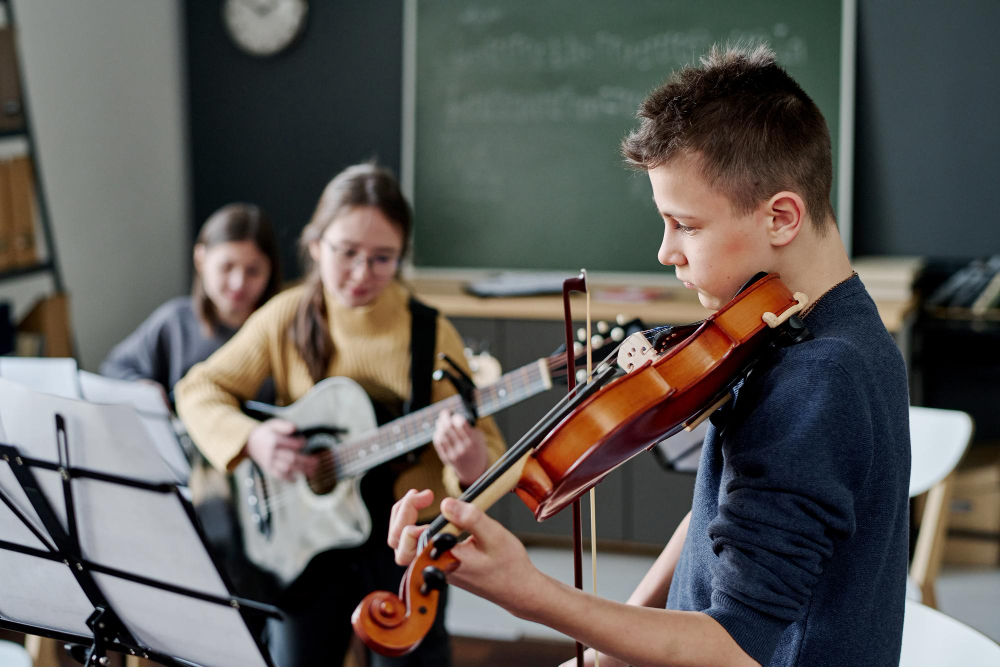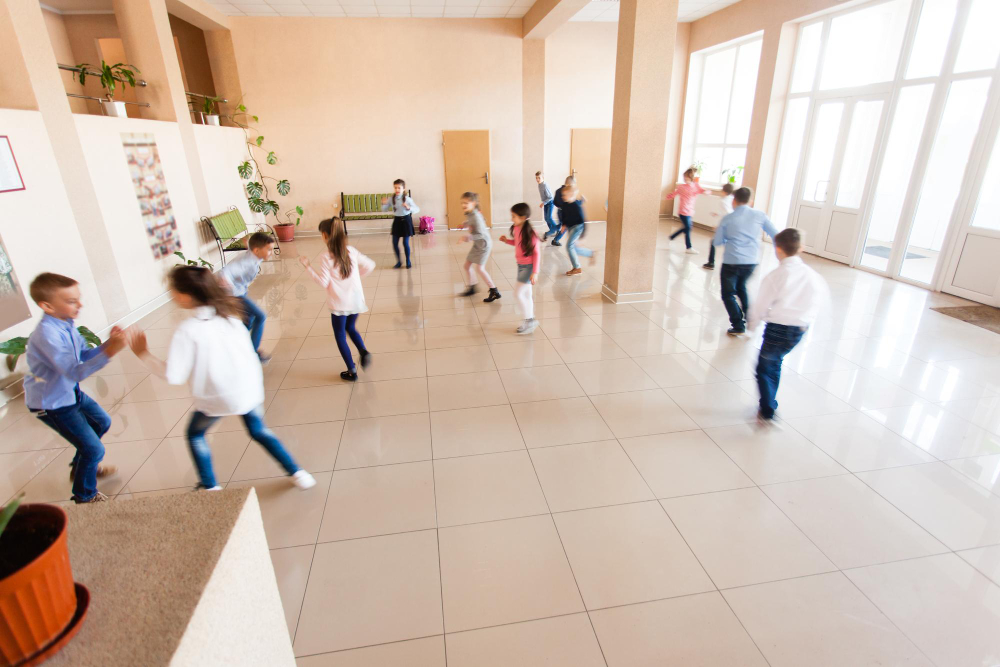
Imagine a classroom where the windows open to pine forests, where children take off their shoes and settle into beanbags, and where laughter during a lesson isn’t a distraction, it’s a sign of learning. There are no rushed drills, no looming tests, no fear of falling behind. Instead, there’s calm. Curiosity. Confidence. This isn’t a special school, it’s the norm.
Welcome to Finland’s education system, where school feels less like a pressure cooker and more like a second home. Here, student wellbeing is not just a goal, it’s the foundation. Students aren’t pushed to compete against each other. They’re encouraged to grow, explore, and enjoy learning at their own pace. In a world where many education systems are locked in a race for test scores and international rankings, Finland chose a different path. A slower, more thoughtful one. One that prioritizes happiness, mental health, and human connection over numbers and rankings.
And here’s the surprising part: they’re still among the best in the world. So, what’s the secret? In this article, we’ll take a deep dive into how Finnish schools nurture healthy, motivated learners, not through pressure or competition, but by putting wellbeing at the heart of education.
In a small primary school in Espoo, a suburb of Helsinki, a group of first graders sits in a circle, not at desks. Their teacher, instead of leading from the front, sits among them, gently guiding a conversation about how each child feels that morning. This “circle time” is a daily ritual, not for academic instruction, but for emotional check-ins. It’s part of the school’s wellbeing program, and no student is rushed to speak. The goal is simple: make sure every child feels heard before the learning even begins.
This kind of moment isn’t unusual. It’s a reflection of something deeply embedded in Finland’s education system: the belief that a happy child learns best. In Finnish schools, a student’s emotional safety, mental balance, and social confidence are not treated as extra, they are central to learning. This focus on wellbeing is not a passing trend or an optional feature. It’s deeply rooted in the national education policy and shows up in daily school life. According to the Finnish National Core Curriculum, every school is expected to support a child’s holistic development. That means helping students grow not just in math or reading, but also in emotions, relationships, and personal health.
So rather than asking, “How can we raise test scores?”, Finnish educators are more likely to ask, “How can we help this child feel calm, safe, and motivated today?” This change in thinking reshapes the entire school experience. Rather than designing systems around competition, ranking, or constant performance pressure, Finland designs for equality, trust, and support. Every child is seen as capable. Every child is expected to succeed, but at their own pace, in their own way, and with a foundation of kindness and care.
In Finnish schools, failure is not feared, it’s accepted as part of learning. Students are not compared to each other. They are guided to focus on personal progress, curiosity, and growth. It’s not about who finishes first. It’s about making sure no one is left behind. This philosophy creates a calm, respectful learning environment where students can thrive. When children feel emotionally safe and supported, they become more open to learning, and far more likely to enjoy the process.

In Finnish schools, teachers do much more than deliver lessons, they build trusting relationships with students, support their emotional growth, and guide them through their personal learning journeys. In fact, one could say that in Finland, a teacher is part educator, part mentor, and part counselor. This is possible because teachers in Finland are highly trained professionals. Every teacher is required to hold a master’s degree, and their training includes not only teaching methods (pedagogy) but also child development, psychology, and emotional intelligence. They are trained to understand how children think, feel, and grow, not just how they perform on paper. Because of this, teaching is one of the most respected careers in the country. Teachers are seen as experts in learning and child wellbeing, similar to how doctors or engineers are respected in other parts of the world.
But what makes Finnish teachers truly unique is their autonomy. They don’t follow a rigid script or tick boxes from a centralized authority. Instead, they are trusted to make their own professional decisions based on what their students need. If a child seems anxious, a teacher can take time to talk. If a class needs a break, they can take one. If a student is moving faster or slower than others, the teacher can adjust the pace, without penalty or pressure. Because they are not overloaded with administrative tasks or forced to prepare students for constant standardized tests, Finnish teachers have time to observe, reflect, and connect. They are free to focus on what really matters: the student. As Finnish education expert Pasi Sahlberg puts it:
"The most important factor in learning is the relationship between the student and the teacher."
This relationship is not built on fear, grades, or authority, but on mutual respect, open communication, and empathy. When students feel that their teacher sees them, listens to them, and believes in them, they are more likely to engage in learning and take ownership of their growth.
.webp)
In many countries, students begin facing tests and grades as early as the first year of school. These exams often become a source of stress, pressure, and even fear, for both children and parents. But in Finland’s education system, the approach is refreshingly different.
There are no high-stakes national exams in the early or middle years of Finnish schooling. In fact, the only standardized test that Finnish students take is called the matriculation exam, and it comes at the very end of upper secondary school, when students are about 18 or 19 years old. Before that, the focus is not on testing, but on teaching and learning. Instead of using external exams to measure progress, Finnish schools rely on something called formative assessment. This means that teachers continuously observe how students are doing and give them regular, supportive feedback. Rather than assigning a score or a letter grade after a test, a teacher might write or say something like, “You explained your idea clearly, but could you try giving another example?”
In the early grades, students often don’t receive traditional number grades at all. Their progress is described using words, not numbers, so that the focus stays on understanding, effort, and development, not on performance or comparison. This method does something powerful: it removes the fear of failure. When there’s no scoreboard hanging over your head, it becomes easier to take risks, ask questions, and enjoy the process of learning. Finnish students are not ranked against each other. There are no “top students” or “bottom students.” There is only individual progress. As a result, students learn to see education not as a competition, but as a personal journey, one where the goal is not to be better than others, but to become better than you were yesterday.
This culture of calm, supportive evaluation helps reduce anxiety and perfectionism, two issues that are becoming more common in highly competitive school systems around the world.
.webp)
One of the most surprising things for visitors to Finnish schools is how relaxed the schedule feels. Unlike many education systems that pack the day with lessons, homework, and after-school tutoring, a typical school day in Finland lasts only about 4 to 5 hours, especially in the early years. But make no mistake, this doesn’t mean Finnish students are falling behind. In fact, they often perform as well or better than students who spend much longer hours at school. How? Because their brains are given what many children in other systems don’t get enough of: rest and recovery.
Between every lesson, students in Finland enjoy a 15-minute break, and in many schools, that break is spent outside, rain, snow, or shine. These breaks are not optional. They are a legal part of the school day, treated as essential for health and learning. In most Finnish schools, you’ll see children playing tag in the snow in winter or running across grassy fields in summer, all bundled up, smiling, and free. This time for play and movement is just as important as the classroom instruction. It helps students stay focused, emotionally balanced, and mentally alert when they return to their studies. Teachers also benefit, these breaks allow them to recharge, reset, and be more present for their students. Play is not viewed as a distraction from learning. It is considered a vital part of it. According to child development experts, free play boosts memory, problem-solving, social skills, and creativity. Finland’s education system understands this, and makes sure children get it every day.
In addition, school days end early, often before 2 PM. That means students have time to relax, pursue hobbies, see friends, and enjoy unstructured time at home. Instead of homework overload, they enjoy a healthy balance between school and life. This kind of schedule reduces stress and allows children to be... well, children. It’s a reminder that learning doesn’t only happen at a desk, and that giving the mind time to breathe can lead to deeper, more meaningful education.
.webp)
In Finland, schools are more than places of academic learning, they are safe spaces where children’s wellbeing comes first. One of the clearest signs of this commitment is the strong mental health support system built into every school. Rather than waiting for problems to become serious, Finnish schools take a proactive and preventive approach to student welfare. Every school has access to a network of trained professionals who work together to make sure no child is left to struggle alone.These professionals include:
What makes this system effective is that these professionals don’t work alone. They collaborate closely with teachers, principals, and parents to build a full picture of each student’s needs. This team-based model means issues are often identified early, before they turn into crises.
Mental health support is also easily accessible and completely normalized. It is not seen as something “extra” or “shameful.” Students are encouraged to talk openly about their feelings, and asking for help is treated as a smart, healthy step, not a sign of weakness. Students can reach out to school staff directly, or a teacher may suggest speaking with the school psychologist. Parents are regularly involved in the conversation, ensuring a strong home-school partnership that benefits the child. In some schools, students have access to dedicated wellbeing rooms, quiet, cozy spaces where they can talk, rest, or simply take a break from overwhelming emotions. Others offer structured group sessions focused on resilience, mindfulness, and peer relationships.

What happens when students are not just listeners in the classroom, but active participants in shaping their own learning? In Finland’s education system, giving students a voice isn’t seen as a luxury, it’s a vital part of helping them grow into confident, independent thinkers. This approach stems from a deep respect for children as individuals with their own thoughts, preferences, and learning styles. Finnish educators believe that when students are given real choices, they feel more connected to what they’re learning, and that connection leads to greater engagement, personal responsibility, and joy. In Finnish schools, this idea is put into practice in many ways. Students are often encouraged to:
This kind of autonomy, even in small decisions, has a big impact. When students feel that their opinions matter, they begin to take ownership of their learning. They don’t study just to meet someone else’s expectations. They learn because they’re genuinely interested. Giving students a voice also helps teachers understand their learners more deeply. When students are encouraged to speak up about their challenges, strengths, and ideas, teachers can respond with more meaningful support and guidance. Of course, this doesn’t mean that students are left entirely on their own. Finnish teachers guide the process carefully, helping students reflect on their choices, stay motivated, and reach their goals in a structured, thoughtful way.

Step into a typical Finnish classroom, and you’ll notice something different right away. The atmosphere is calm and uncluttered. Natural light floods in through large windows. You might see soft rugs, beanbags, or quiet corners where students can read, reflect, or simply take a moment to reset.
Furniture is flexible and movable. Instead of rigid rows of desks, you’ll find round tables, cozy nooks, and sometimes even standing workstations. This variety allows students to choose where and how they learn best, sitting with friends during group work, or alone when they need focus and quiet. But it’s not just about comfort. Every design decision has a purpose: to reduce stress, support concentration, and make learning feel natural and enjoyable. Many schools also pay close attention to acoustics and noise control. They use sound-absorbing materials to reduce distractions and create a peaceful auditory environment, especially important for young learners and those with sensory sensitivities.
Outside the classroom, the learning environment continues. Finnish schools are often surrounded by nature, trees, fields, walking paths, and even forests. Outdoor areas are used not only for play, but also for teaching. In many schools, it’s common to hold lessons outside, especially in science, art, or environmental studies. This connection to nature is deeply Finnish. Children are encouraged to explore the outdoors in every season, even in winter. It teaches them resilience, curiosity, and a sense of peace that comes from being close to the natural world.
Most importantly, these environments are built on a sense of respect and dignity. Spaces are kept clean and organized, not because students are forced to, but because they take pride in their surroundings. Classrooms feel more like community spaces than traditional institutions. There are few signs, no loud posters with rules, and no reward charts. Instead, students are trusted to self-regulate and behave responsibly.

One of the quiet strengths of Finland’s education system is something you won’t find in most policy documents or rankings. It’s not a teaching method or a curriculum. It’s a feeling, something deeply woven into every Finnish school: trust. This trust-driven system stands in sharp contrast to the high-pressure, high-surveillance education models found in many countries. Finnish teachers are not required to “teach to the test” or submit weekly reports to prove productivity. Instead, they are seen as highly capable professionals who know their students and are given the freedom to make decisions in the best interest of the child. This approach extends to students as well. Children are not burdened by constant comparisons, rankings, or performance metrics. There is no national grading system for schools, and schools are not publicly ranked. The aim is not to create winners and losers, but to ensure that every child has a fair opportunity to succeed.
Homework is also kept light, especially in the early years, because Finnish educators believe that life outside school matters just as much as life inside it. Afternoons are left open for rest, hobbies, time with family, or play. The goal is balance, not burnout. This low-pressure, high-trust culture reduces stress, builds intrinsic motivation, and fosters a healthy attitude toward learning. Students don’t feel that they’re constantly being judged. Instead, they feel they are being supported. Even without external pressure, Finnish students grow into responsible, self-directed learners. They are not driven by fear of failure, but by a genuine desire to learn, to improve, and to contribute.

For many, it may seem counterintuitive: How can a country with no standardized testing, minimal homework, short school days, and extended recesses possibly perform well in global education rankings? But Finland continues to prove that wellbeing and academic achievement are not opposites, they go hand in hand. Despite steering clear of the high-pressure tactics used in many education systems, Finnish students consistently score well in international assessments, particularly in areas that matter most: literacy, equity, and student wellbeing. Here’s what the data tells us:
So, what’s the takeaway? Finland has shown the world that academic excellence doesn’t require competition, fear, or exhaustion. Instead, it comes from creating a system that values happiness, trust, and emotional safety.

You don’t have to copy Finland exactly to benefit from its lessons. Schools around the world can reflect on these ideas:
Finland has shown that an education system focused on student wellbeing doesn’t just feel good, it works.
Students are calmer, healthier, and more engaged. Teachers are empowered. Families are partners. And learning becomes something joyful, not stressful.
So why not see it with your own eyes?
Come experience Finland’s education system firsthand. Book your school visit through TechClass today, and discover how education can feel when happiness comes first.


.webp)